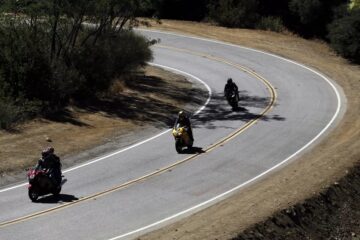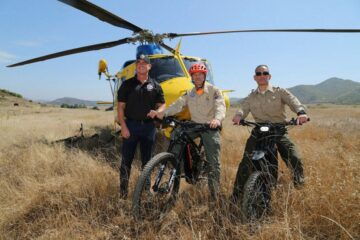Thrill seekers pay the price
A new state law lets local governments slap stiff bills on people who’ve been rescued as a result of their risky behavior.
Source of this article – Los Angeles Times, January 18, 2005.
Christopher Reynolds and Ashley Powers | Times Staff Writers
On the morning of Jan. 9, Ethan Donahue, a 24-year-old whitewater enthusiast thirsty for adventure, launched his kayak into rain-swollen San Luis Creek in San Luis Obispo, but he got more than he’d bargained for.Within 100 yards, his kayak got stuck in a rapid and flipped, forcing Donahue to scramble to the base of the Broad Street bridge, where firefighters rescued him. Four days later, city officials seized upon a new state law and said they’d bill Donahue for rescue costs up to $4,500.
Donahue could become the first of many storm victims assessed under the law, which went into effect Jan. 1. The case could influence other local officials in California as they count the costs of emergency rescues during the recent spate of storms.
“I think it’s absolutely ridiculous. I’m completely flabbergasted,” says Donahue, a veteran kayaker and rafter. He says he declined rescue and could have escaped without firefighters’ help.
For years, government agencies billed citizens for wilderness rescues and firefighting costs, often with a $1,000 limit. But state Sen. Sam Annestad (R-Grass Valley), seeking to help budget-squeezed local governments, sponsored SB 1707, which gives authorities new power to collect up to $12,000 when they believe victims defied warnings or common sense.
Across Southern California, emergency officials say they haven’t sought to recover costs from storm victims, but they say the new law gives them a powerful tool primarily to assess drivers who defy flood closure signs. Orange County Fire Authority spokesman Steven Miller estimates that up to 20% of the agency’s swift-water rescues involve people who knowingly enter off-limits areas. Riverside County Fire Capt. Rick Vogt says about half of recent rescues could qualify for cost recovery, ranging from drivers who ignored barricades to a man who jumped into the Santa Ana River in a raft.
In San Luis Obispo, authorities are debating the cost for Donahue. The Fire Department estimates his rescue cost at $4,500, but City Atty. Jonathan Lowell says, “If we ask [for] the full amount I think the kid may say no.” He says a smaller assessment would “send a message” that the city discourages risky behavior that wastes taxpayers’ money.
Says San Luis Obispo Fire Chief Wolfgang Knabe, “This is basically to tell people, ‘Don’t do stupid things.’ ”
But making a case can be tricky. City officials acknowledge that no signs or barricades barred entry to San Luis Creek, and city laws do not identify penalties for entering it during high water, when, a spokesman says, “it roars like a dragon through town.”
Instead, city officials say they rely on a section of the new law that says a “closed area” could be a site “that a reasonable person under the circumstances” would know was dangerous.
But Donahue, a civil engineering student at Cal Poly San Luis Obispo, says he spent more than six hours scouting the creek with a friend, Jake Stoesz, 19, the day before they launched. “I’ve been a whitewater rafting guide for seven years, and I know how to read water. I knew this [rapid] was the potential problem of the whole stretch, from San Luis [Obispo] to the ocean,” Donahue says. “I was about 9 inches too far to the left, and it got me.”
When his kayak got stuck, Donahue slid out of the vessel, made his way in calf-deep water to a wall under the bridge and signaled to a friend on the bank to toss him a line. That’s when he says firefighters arrived.
“I’ve dealt with much worse situations on the lower Kern [River],” Donahue says. “I was well prepared to deal with the situation until the city and county intervened.”


